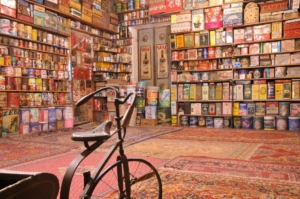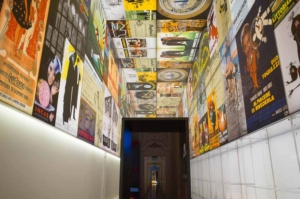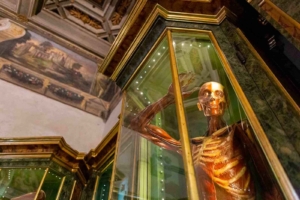Pinacoteca Nazionale di Bologna: what to see, hours & tickets
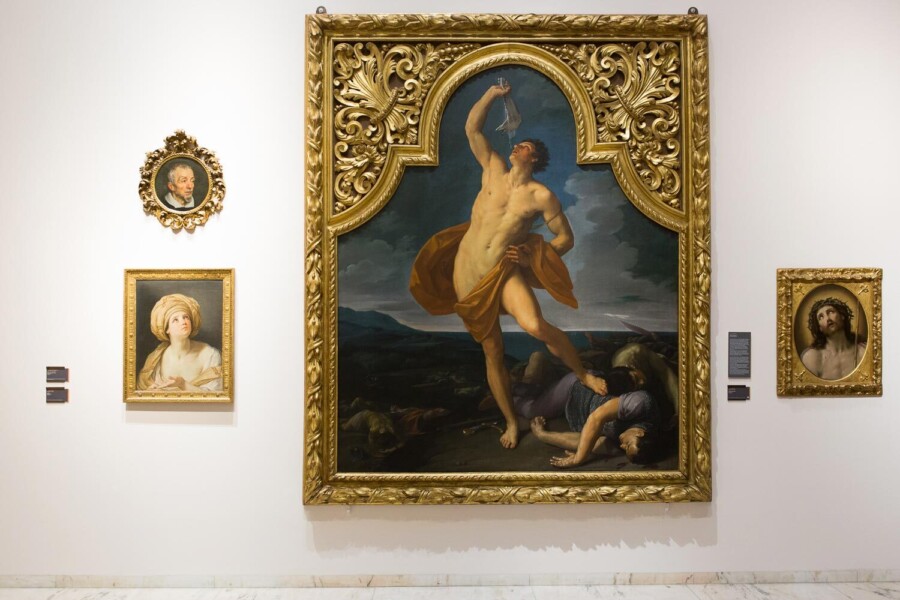
The Pinacoteca Nazionale di Bologna is a landmark for art lovers, showcasing centuries of artistic excellence.
Located in the historic university district, this museum houses masterpieces from the 13th to the 18th centuries.
Housed in a former Jesuit novitiate, its halls echo the legacy of Bologna’s artistic evolution and Italy’s broader cultural heritage.
Situated in the heart of Bologna's university, the Pinacoteca Nazionale di Bologna occupies the former Jesuit novitiate of Sant'Ignazio.
This 17th-century edifice, repurposed during the Napoleonic era, now serves as a sanctuary for masterpieces spanning from the 13th to the 18th centuries.
The museum's origins trace back to 1808, and over the years, it has curated a collection that reflects the evolution of art in Bologna and beyond.
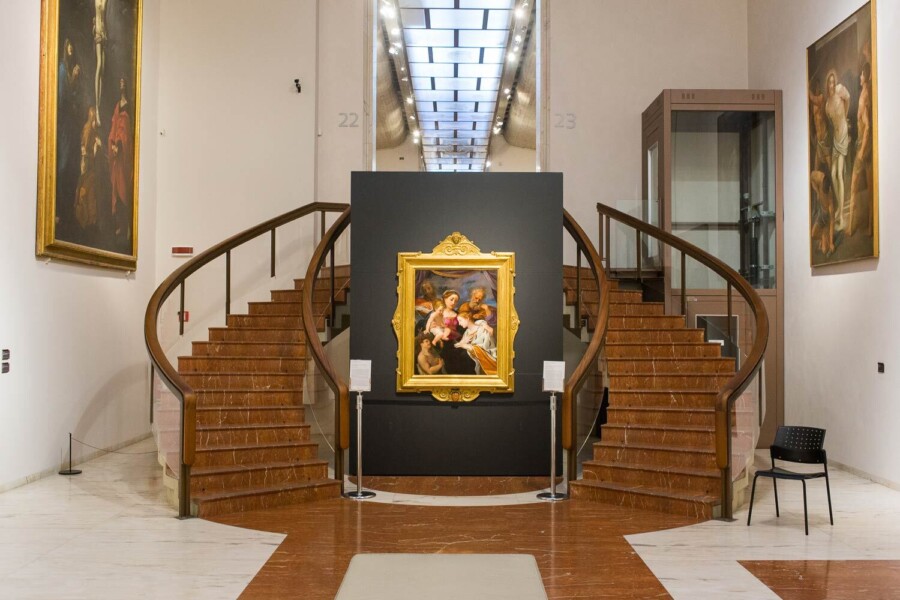
It's always a good idea to arrive at a museum well-prepared for what to look for and what to save for the next time.
The museum's collection is meticulously organized, guiding visitors through various art movements and periods.
Inside the Pinacoteca, you'll mostly find works by Emilian painters from the 1200s to the 1700s, with a few pieces from other parts of Italy, like Giotto and Raffaello Sanzio.
My suggestion?
Take an entire afternoon to visit it or, if you're art-nerds, dilute the visit over several days, to be able to appreciate the eras and schools represented.
Let's kick off the art journey back in the 1300s.
A few steps in to meet Vitale da Bologna's masterpiece, "Saint George Slaying the Dragon". This piece alone is worth a visit, so don't rush to see everything else and linger for a long time in the first corridor.
Just next to it, you'll be amazed by the gazes of the polyptych by Pseudo Jacopino. I think I fell in love with a few Saints, ops.
Step into another room, and there it is – the one and only piece by Giotto still hanging out in Bologna: the polyptych called "The Madonna Enthroned with Four Saints."
Can't swing a day trip from Bologna to Padua?
Well, this is your chance to proudly declare, "Yep, I've seen Giotto!"
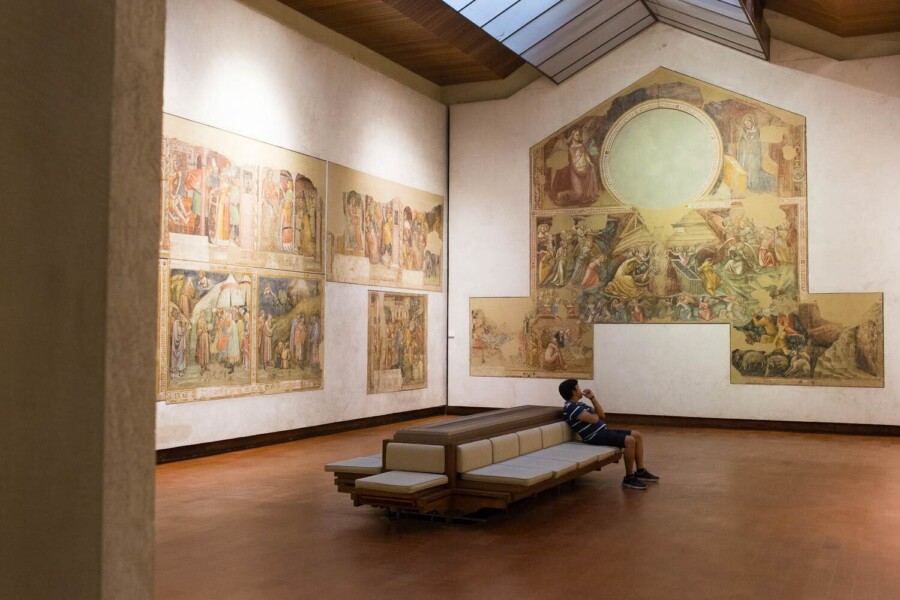
Towards the end of the 14th-century section, you'll find 3 spacious rooms that play home to the rescued frescoes from the San Francesco convent refectory and Sant'Apollonia di Mezzaratta church.
These artworks were in danger due to harsh environmental conditions.
But in 1949, they were delicately removed and then reconstructed right here, keeping true to the original structure.
As you step into the large room, you'll catch sight of the church's counter-façade, complete with a charming rose window and a gently sloping roof.
It's almost like wandering through the lingering spirit of a church.
And don't miss the room dedicated to the sinopias, the initial sketches that inspired those captivating frescoes.
If you haven't said wow yet, you will.
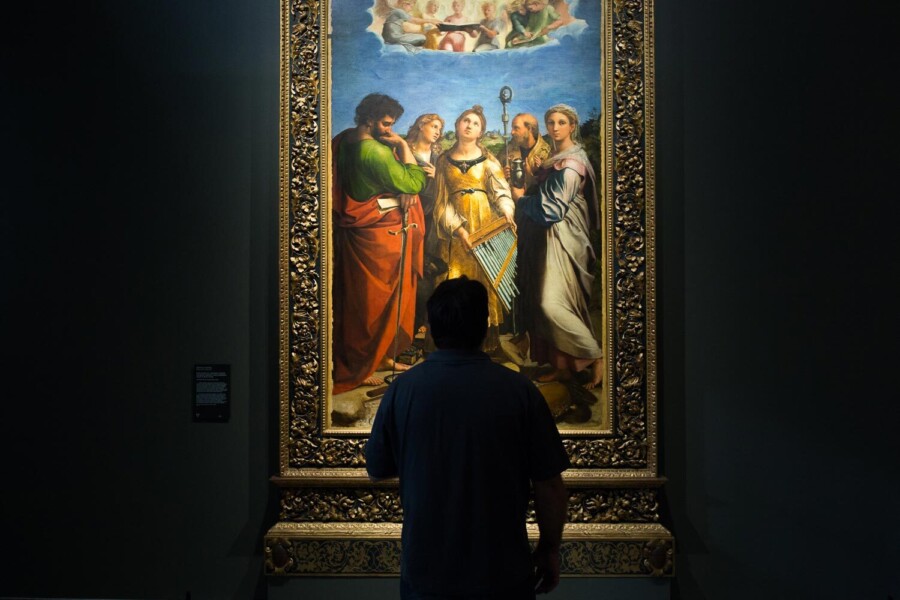
Raffaello Sanzio, a master painter and architect of the Italian High Renaissance, is best known for his Madonnas and large figure compositions.
His work is admired for its clarity of form and ease of composition.
In Florence, his paintings of the Madonna and Child display his characteristic human warmth and serenity.
Among his most famous paintings are "Madonna in the Meadow" and "The Transfiguration."
At the Pinacoteca, you’ll find Raffaello's "Ecstasy of St. Cecilia," a masterpiece that epitomizes the High Renaissance qualities of harmony and ideal beauty
But other masters are yet to come: Amico Aspertini's "Adoration of the Magi", Parmigianino with the "Pala di Santa Margherita", El Greco with early work, and Titian with the late work "Jesus crucified with the Good Thief".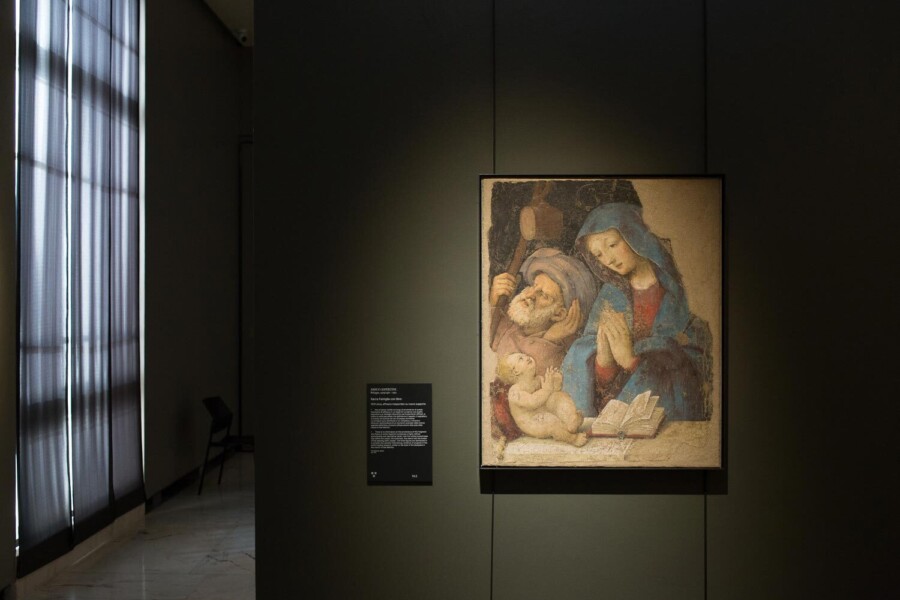
The Carracci brothers—Annibale, Agostino, and their cousin Ludovico—were pivotal in the late 16th-century art scene.
They founded the Accademia degli Incamminati in Bologna, aiming to reform art by returning to naturalism and the study of truth and drawing, opposing the refined, intellectual phase of Mannerism.
Annibale Carracci, the most experienced artist in the group, shared his knowledge of painting through collaborative works with his pupils.
Their academy, considered the first major art school based on life drawing, served as a model for later art schools throughout Europe.
All their paintings deserve your attention, but don't miss "The Madonna with Child Enthroned." Ludovico Carracci put Bologna and its towers in the background. It's like he plonked the scene right into reality.
Tuesday–Sunday: 9:00 AM – 7:00 PM
Monday: Closed
Occasionally open for special evening openings. Check the calendar on the official website for updated dates and times.
